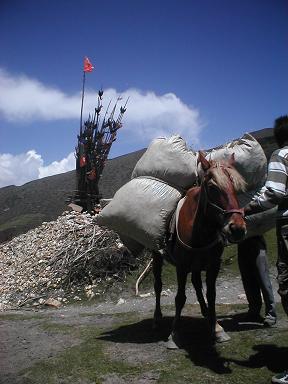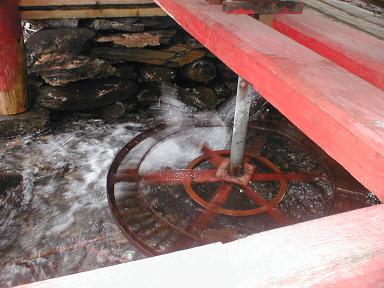 At the moment I’m in Tibet.
At the moment I’m in Tibet.
No, I don’t mean the Tibetan Autonomous Region (TAR), I mean historic and ethnic Tibet. TAR is the province occupied by China which contains Lhasa, and which we lazily often refer to as “Tibet” in English. Tibet proper also includes all of Qinghai province, and parts of several other Chinese provinces. Tibetan people making a political point refer to themselves as living in Tibet, even if they don’t live in TAR. As a tourist this is good news – it is much easier to visit the non-TAR parts of Tibet, than suffer the complex web of permits and travel restrictions in TAR itself.
I took an all day bus ride north of Chengdu, a dramatic drive up into the mountains along a river lined with electrical pylons and filled with dam after dam, arriving in Songpan (population 70,000). Immediately the contrast with large Chinese cities was clear. It is nestled amongst low green mountains, with old city walls still giving it shape. I felt immediately much happier.
The thing to do in Songpan is to go horse trekking, which basically means a 3 day hike with camping, only all the uphill bits you sit on a horse. It’s too dangerous on steep downhill parts. This is hard work, back or knees aching after 6 hours riding in a day. Guides did all the real hard work, like erect tents and cook us dinner. The photo (right) is of a horse loaded up with feed, near a Tibetan prayer for peace, which involves putting arrows on the top of hills and mountains.
On the way we saw a Tibetan prayer water wheel (photo below). A small stream was channeled by rocks into a thin open pipe, where it landed on a simple and inefficient water wheel. This was housed in a little hut, and spun a prayer wheel. That, in turn, was octagonal, and had a chant written round it in the Tibetan alphabet. I assume that the idea, which is slightly mad if quite sweet and fun, is that by this means the river says your prayers for you.

I should add, that I later found out that these things might not have been part of Tibetan Buddhism, but the older animist Tibetan Bon religion. Many aspects of Tibetan Buddhism come from Bon, and Bon survives in some very small areas near here.
Yes, we saw Tibetan prayer wheels everywhere in Nepal in 2001, including at least one water-driven one in the valley where we went trekking. You can get little hand-held ones that you wave around — every tourist tat stand is chock-a-block with these — and I seem to recall the big stupa has wind-operated ones around its perimeter, which suggests it is a (Tibetan) Buddhist practice. I’ll be back there in a week …
Hi,
enjoyed your blog.. wanted to say hello
enjoy tibet : )
Duncan
http://www.theadventuretrekker.com
We here at http://www.himalayacrafts.com have a variety of selected Tibetan Prayer Wheels for online sale made by qualified and experienced craftsmen from Nepal and Tibetan people living in Nepal. If you want additional information on Prayer Wheel or Mani Wheel simply send us a mail at sales@himalayacrafts.com